At O-I, our vision is to be the most innovative, sustainable, and chosen supplier of brand-building packaging solutions. While we believe glass packaging is already the most sustainable packaging solution, sustainability at O-I is about more than what we make. It is also about how we make it.
It is about the interconnected ecosystem that involves our suppliers, our customers, our people, and the communities where we operate. It is about achieving balance between our operations and the products we make with the current and future needs of our communities, the planet, and our collective prosperity. At O-I, the journey to this balance —sustainability — is grounded in resilience, innovation, and the ever-present challenge to transform what we do.
The goals we have set for our sustainability program directly reflect our vision of ensuring a healthier future for our industry, communities, employees, and the Earth. These targets — based on a 2019 baseline year — are our commitment to making a lasting, meaningful impact today and for years to come.
Increase recycled content to 60% on average by 2030. O-I is taking a tailored approach to increase recycled content rates across its enterprise network as rates vary significantly by geography.
Renewable electricity is a pillar in our strategy to lower carbon emissions. Our goal is to reach 80% renewable electricity use by 2030.
Target to reduce GHG emissions 47% by 2030. This goal aligns O-I with a 1.5 degree pathway.
At O-I, our goal is always zero injuries and illnesses. As we work toward that goal, we are pursuing a 50% improvement of our Total Recordable Incident Rate (TRIR) by 2030.
Achieve sustainability balance, together, by aligning our supply chain with our 2030 sustainability vision and goals.
O-I is dedicated to fostering positive change for our people and planet through corporate and employee contributions, while actively involving our global workforce in volunteer activities. We will work alongside our local partners and value chain to realize this goal, which includes supporting glass recycling initiatives across our communities.
At O-I, we are better when we reflect the diverse world we serve, feel welcome, and have equal access to opportunities. We are focused on increasing all aspects of diversity, equity and inclusion across our team.
Reinvent and reimagine glass-making so the circularity of glass meets the potential of our MAGMA technologies, low-carbon alternative fuels, and lightweighted glass packaging.
Reduce the amount of natural resources used, reduce the generation of waste through reuse and recycling as we drive towards a “Zero Waste” organization.
We are committed to reducing our global water usage 25% by 2030, prioritizing operations in higher risk areas.
No one knows sustainable glass packaging like O-I. We’re taking bold, decisive action to create a competitive, sustainable business through the Power of Glass.
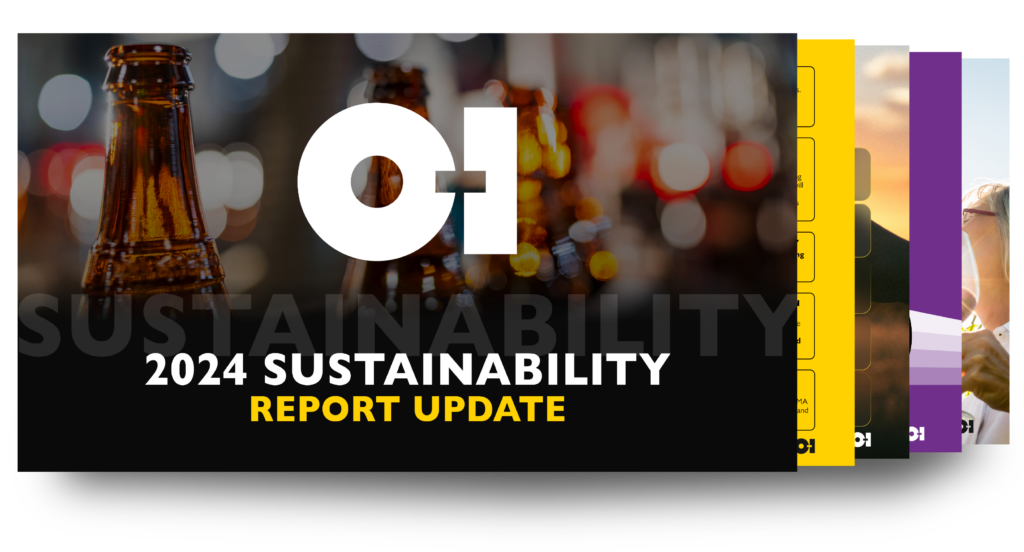
Glass bottles and jars are the clear choice for the health of you and your family and the sustainability of the planet.
Our ambition is for glass containers to stay in the value chain, rather than end up in landfills or the environment. We’re innovating to build sophisticated, circular ecosystems that drive glass recycling and increase recycled content in our products – but we can’t do it alone.
We do this by:
· Driving collaboration between stakeholders across the value chain
· Exploring partnerships across industries to make use of recyclable materials
· Growing community collection sites along with our Glass4Good program
· Collaborating with associations like the European Container Glass Federation (FEVE) and the Glass Packaging Institute (GPI)
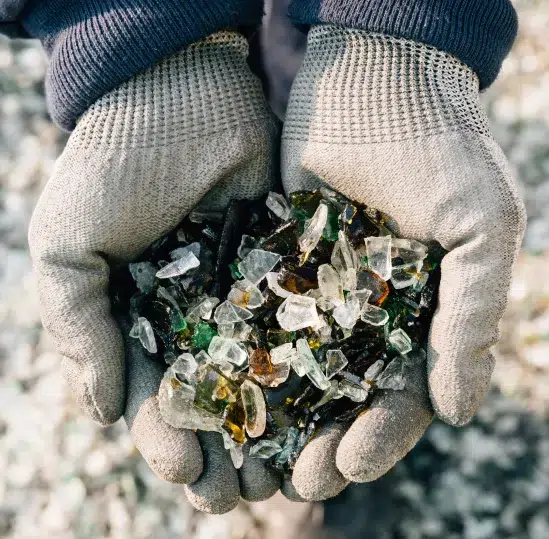
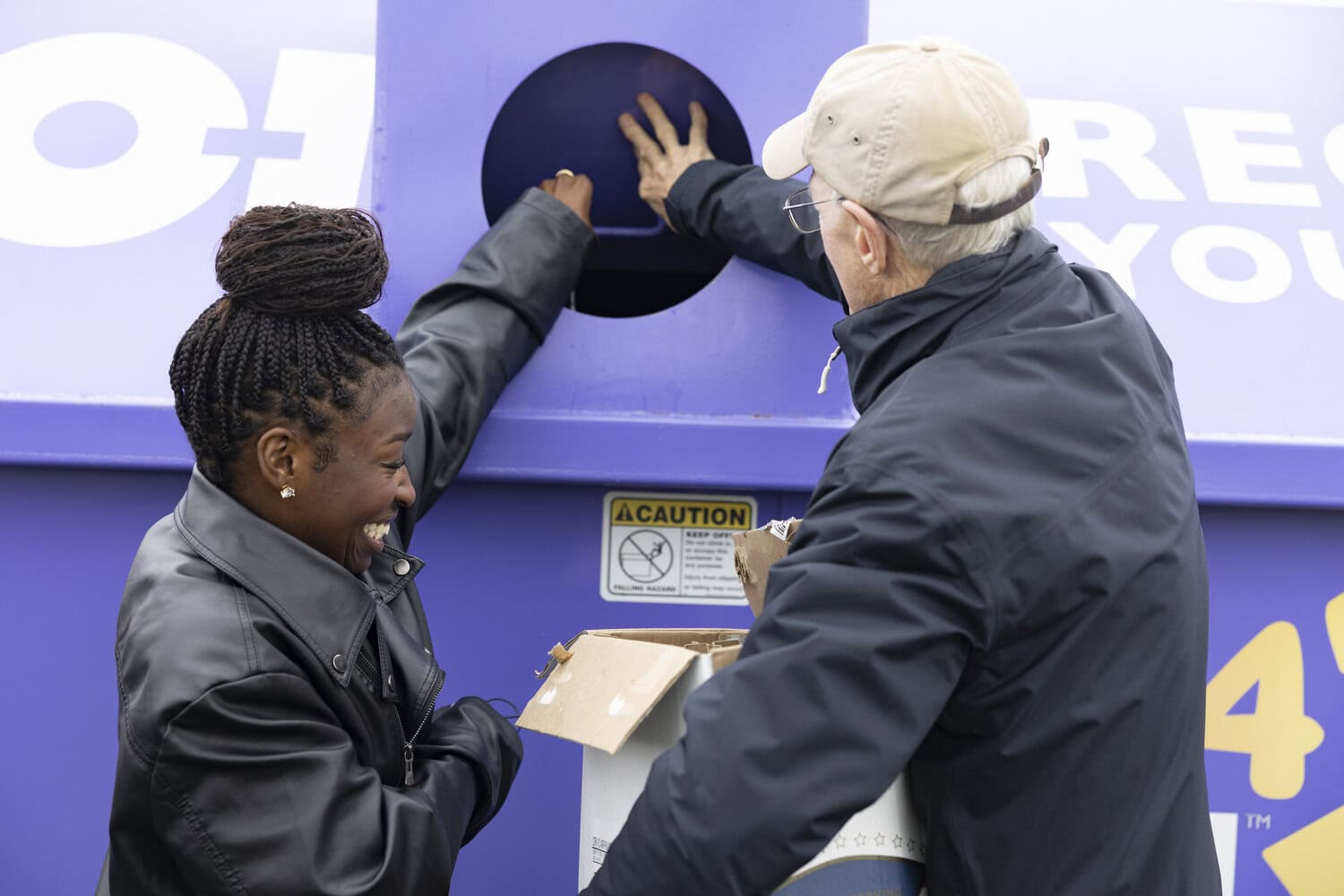
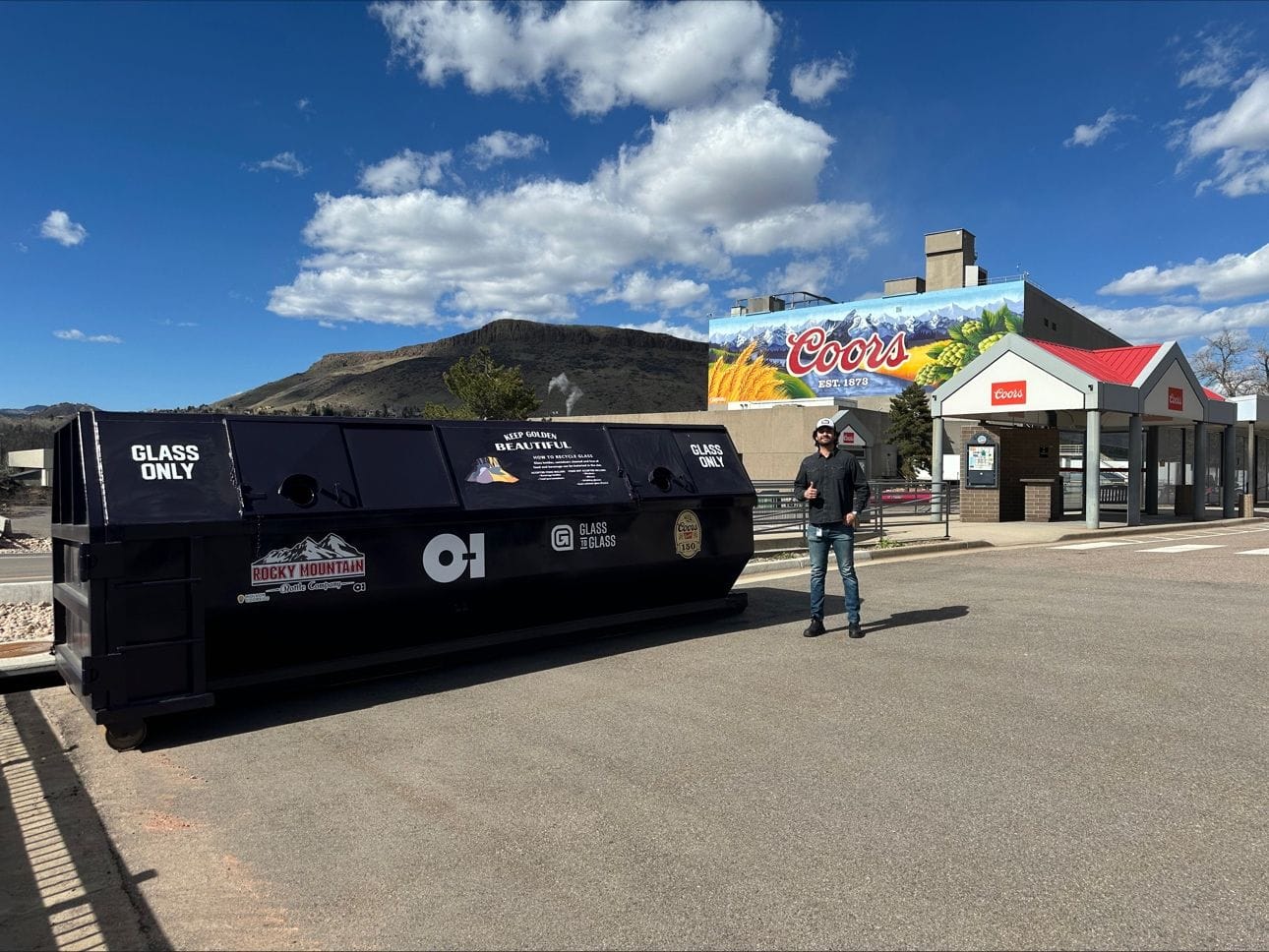
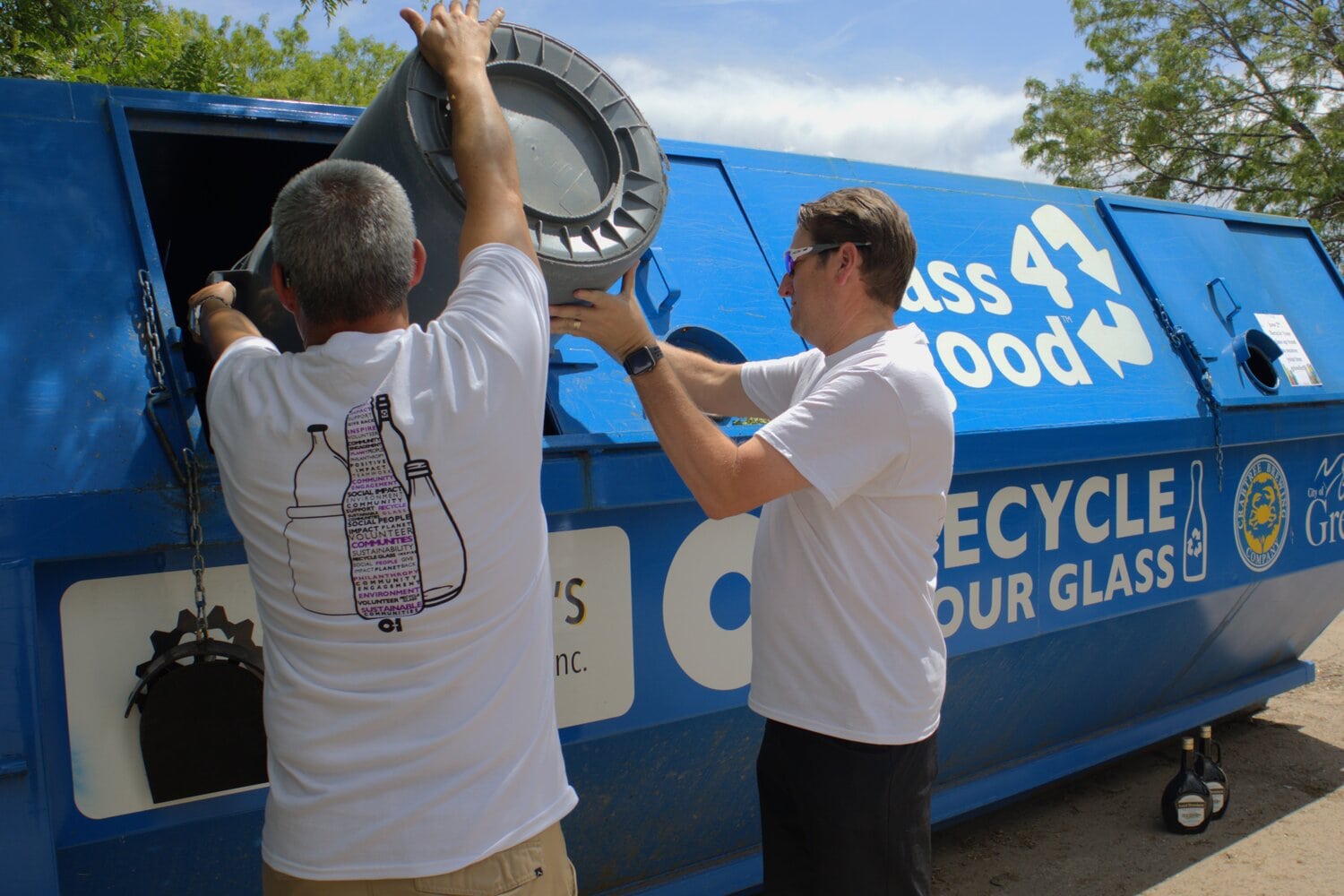
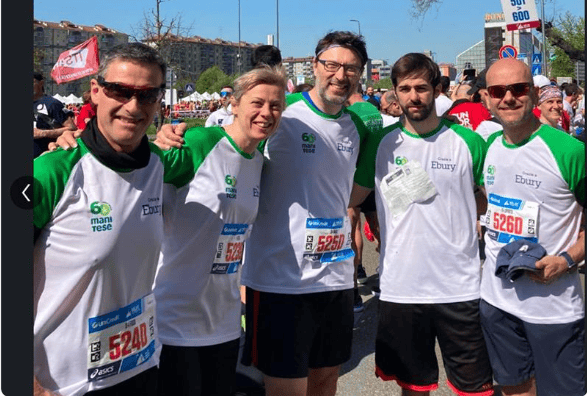
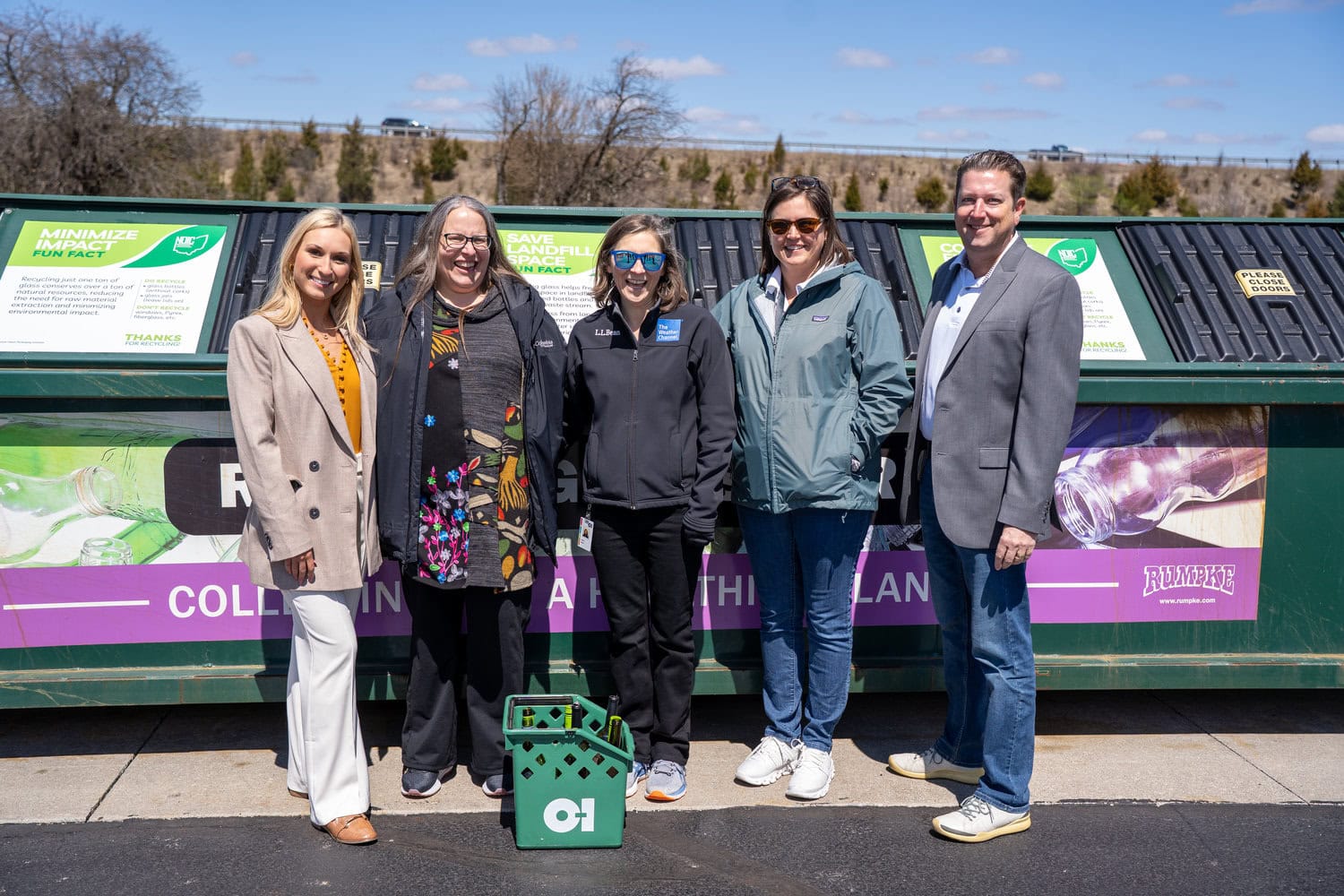
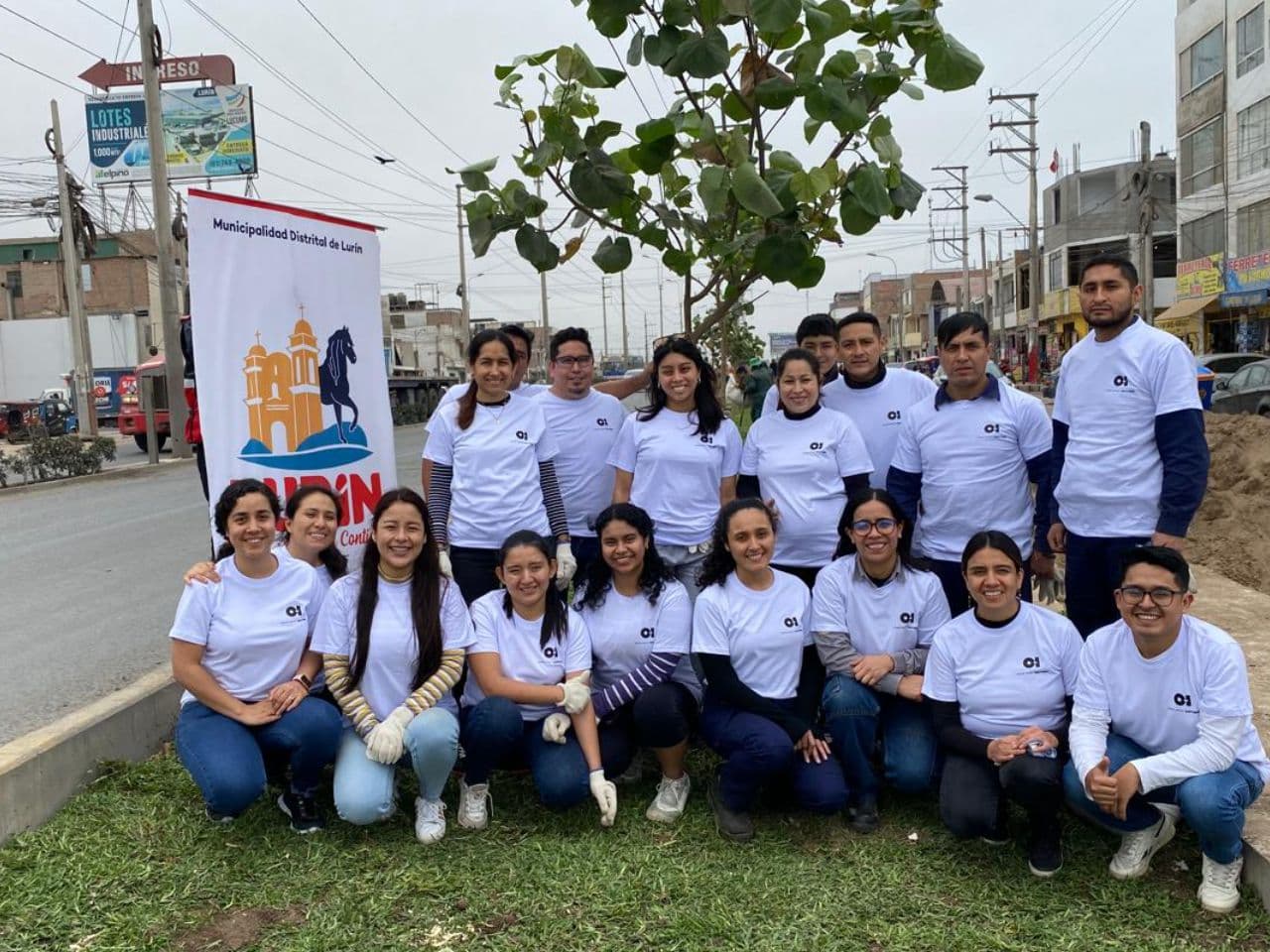
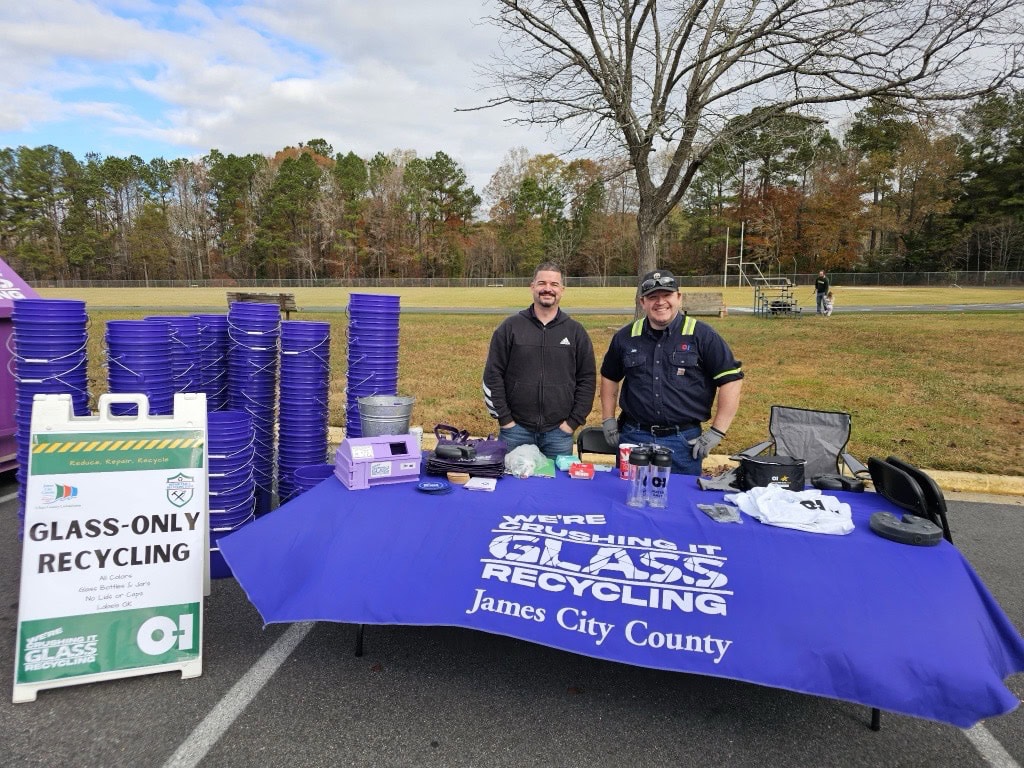
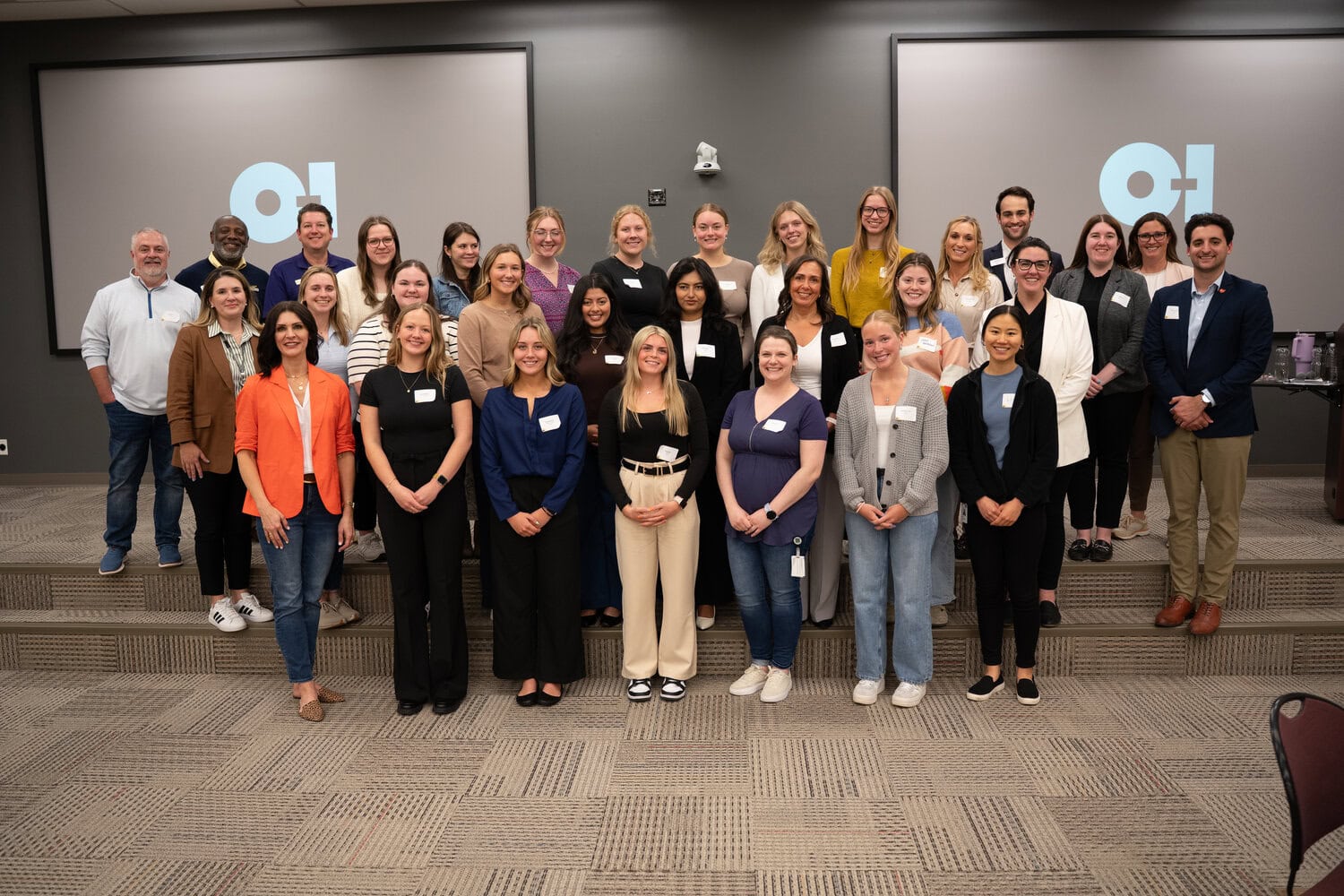
We are developing a culture of inclusion that promotes diversity and the value a diverse workforce brings.
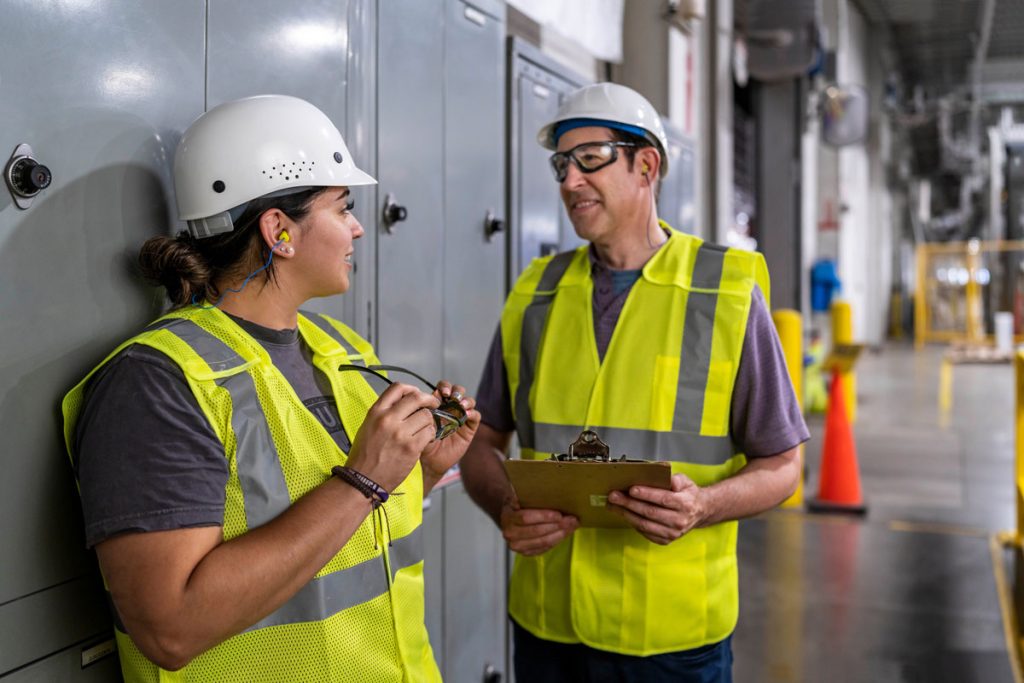
We are developing a culture of inclusion that promotes diversity and the value a diverse workforce brings.
We have several ERGs operating across our global footprint. These groups of engaged employees seek to create a culture of understanding for the LGBTQ+ community as well as gender, racial, and generational equity.
O-I is the first company in the packaging industry to issue a Green Bond, furthering our commitment to sustainability throughout our global manufacturing operations and glass packaging. Project allocations for our Green Bonds have focused on increasing renewable energy utilization, energy efficiency, R&D transformation, reducing water consumption, increasing circularity, and decreasing raw material use. Based on the volume of cullet allocated to the offering, we conserved approximately:
tons of CO2 avoided
MWh of energy conserved
tons of raw materials conserved
A note on Forward-Looking Statements
Would you like to be informed about the latest innovations in glass packaging, new products, and the latest trends?
© 2025 O-I Glass. All rights reserved. Privacy | Legal | Contact & Locations
| Cookie | Duration | Description |
|---|---|---|
| __cf_bm | 30 minutes | This cookie, set by Cloudflare, is used to support Cloudflare Bot Management. |
| _GRECAPTCHA | 5 months 27 days | This cookie is set by the Google recaptcha service to identify bots to protect the website against malicious spam attacks. |
| AWSALBCORS | 7 days | This cookie is managed by Amazon Web Services and is used for load balancing. |
| cookielawinfo-checkbox-advertisement | 1 year | Set by the GDPR Cookie Consent plugin, this cookie is used to record the user consent for the cookies in the "Advertisement" category . |
| cookielawinfo-checkbox-advertisement | 1 year | Set by the GDPR Cookie Consent plugin, this cookie records the user consent for the cookies in the "Advertisement" category. |
| cookielawinfo-checkbox-analytics | 11 months | This cookie is set by GDPR Cookie Consent plugin. The cookie is used to store the user consent for the cookies in the category "Analytics". |
| cookielawinfo-checkbox-analytics | 1 year | Set by the GDPR Cookie Consent plugin, this cookie is used to record the user consent for the cookies in the "Analytics" category . |
| cookielawinfo-checkbox-functional | 11 months | The cookie is set by GDPR cookie consent to record the user consent for the cookies in the category "Functional". |
| cookielawinfo-checkbox-functional | 1 year | The cookie is set by the GDPR Cookie Consent plugin to record the user consent for the cookies in the category "Functional". |
| cookielawinfo-checkbox-necessary | 11 months | This cookie is set by GDPR Cookie Consent plugin. The cookies is used to store the user consent for the cookies in the category "Necessary". |
| cookielawinfo-checkbox-necessary | 1 year | Set by the GDPR Cookie Consent plugin, this cookie is used to record the user consent for the cookies in the "Necessary" category . |
| cookielawinfo-checkbox-non-necessary | 1 year | Set by the GDPR Cookie Consent plugin, this cookie is used to record the user consent for the cookies in the "Non-necessary" category . |
| cookielawinfo-checkbox-others | 11 months | This cookie is set by GDPR Cookie Consent plugin. The cookie is used to store the user consent for the cookies in the category "Other. |
| cookielawinfo-checkbox-others | 1 year | Set by the GDPR Cookie Consent plugin, this cookie is used to store the user consent for cookies in the category "Others". |
| cookielawinfo-checkbox-performance | 1 year | Set by the GDPR Cookie Consent plugin, this cookie is used to store the user consent for cookies in the category "Performance". |
| cookielawinfo-checkbox-performance | 11 months | This cookie is set by GDPR Cookie Consent plugin. The cookie is used to store the user consent for the cookies in the category "Performance". |
| CookieLawInfoConsent | 1 year | Records the default button state of the corresponding category & the status of CCPA. It works only in coordination with the primary cookie. |
| CookieLawInfoConsent | 1 year | CookieYes sets this cookie to record the default button state of the corresponding category and the status of CCPA. It works only in coordination with the primary cookie. |
| csrftoken | past | This cookie is associated with Django web development platform for python. Used to help protect the website against Cross-Site Request Forgery attacks |
| elementor | never | The website's WordPress theme uses this cookie. It allows the website owner to implement or change the website's content in real-time. |
| JSESSIONID | session | The JSESSIONID cookie is used by New Relic to store a session identifier so that New Relic can monitor session counts for an application. |
| nlbi_1816097 | session | A load balancing cookie set to ensure requests by a client are sent to the same origin server. |
| PHPSESSID | session | This cookie is native to PHP applications. The cookie is used to store and identify a users' unique session ID for the purpose of managing user session on the website. The cookie is a session cookies and is deleted when all the browser windows are closed. |
| viewed_cookie_policy | 1 year | The cookie is set by the GDPR Cookie Consent plugin to store whether or not the user has consented to the use of cookies. It does not store any personal data. |
| viewed_cookie_policy | 11 months | The cookie is set by the GDPR Cookie Consent plugin and is used to store whether or not user has consented to the use of cookies. It does not store any personal data. |
| visid_incap_1816097 | 1 year | SiteLock sets this cookie to provide cloud-based website security services. |
| Cookie | Duration | Description |
|---|---|---|
| __cf_bm | 30 minutes | This cookie, set by Cloudflare, is used to support Cloudflare Bot Management. |
| _mailmunch_visitor_id | never | Mailmunch sets this cookie to create a unique visitor ID for the Mailmunch mailing list software. |
| _scid | 1 year 1 month | This cookie is set by Snapchat to store Snapchat Pixel unique ID of the User. |
| bcookie | 1 year | LinkedIn sets this cookie from LinkedIn share buttons and ad tags to recognize browser ID. |
| bscookie | 1 year | LinkedIn sets this cookie to store performed actions on the website. |
| campaignMonitorViewedIds | session | Campaign Monitor plugin to allow people to subscribe to our mailing list. |
| lang | session | LinkedIn sets this cookie to remember a user's language setting. |
| lidc | 1 day | LinkedIn sets the lidc cookie to facilitate data center selection. |
| mailmunch_second_pageview | never | Mailmunch sets this cookie to manage subscription service to mailing lists. |
| mid | 2 years | The mid cookie is set by Instagram to personalise user experience by remembering user preferences and settings. |
| UserMatchHistory | 1 month | LinkedIn sets this cookie for LinkedIn Ads ID syncing. |
| wp-wpml_current_language | session | WordPress multilingual plugin sets this cookie to store the current language/language settings. |
| X-AB | 1 day | Cookie associated with embedding content from Snapchat. |
| Cookie | Duration | Description |
|---|---|---|
| _gat | 1 minute | This cookie is installed by Google Universal Analytics to restrain request rate and thus limit the collection of data on high traffic sites. |
| AWSALB | 7 days | AWSALB is an application load balancer cookie set by Amazon Web Services to map the session to the target. |
| Cookie | Duration | Description |
|---|---|---|
| _ga | 2 years | The _ga cookie, installed by Google Analytics, calculates visitor, session and campaign data and also keeps track of site usage for the site's analytics report. The cookie stores information anonymously and assigns a randomly generated number to recognize unique visitors. |
| _ga_3VZZNTFK6B | 2 years | This cookie is installed by Google Analytics. |
| _ga_8LXKHSK1EM | 2 years | This cookie is installed by Google Analytics. |
| _gat_UA-10167707-1 | 1 minute | A variation of the _gat cookie set by Google Analytics and Google Tag Manager to allow website owners to track visitor behaviour and measure site performance. The pattern element in the name contains the unique identity number of the account or website it relates to. |
| _gcl_au | 3 months | Provided by Google Tag Manager to experiment advertisement efficiency of websites using their services. |
| _gid | 1 day | Installed by Google Analytics, _gid cookie stores information on how visitors use a website, while also creating an analytics report of the website's performance. Some of the data that are collected include the number of visitors, their source, and the pages they visit anonymously. |
| _hjAbsoluteSessionInProgress | 30 minutes | Hotjar sets this cookie to detect the first pageview session of a user. This is a True/False flag set by the cookie. |
| _hjFirstSeen | 30 minutes | Hotjar sets this cookie to identify a new user’s first session. It stores a true/false value, indicating whether it was the first time Hotjar saw this user. |
| _hjIncludedInPageviewSample | 2 minutes | Hotjar sets this cookie to know whether a user is included in the data sampling defined by the site's pageview limit. |
| _hjIncludedInSessionSample | 2 minutes | Hotjar sets this cookie to know whether a user is included in the data sampling defined by the site's daily session limit. |
| _hjTLDTest | session | To determine the most generic cookie path that has to be used instead of the page hostname, Hotjar sets the _hjTLDTest cookie to store different URL substring alternatives until it fails. |
| CONSENT | 2 years | YouTube sets this cookie via embedded YouTube videos and registers anonymous statistical data. |
| CONSENT | 2 years | YouTube sets this cookie via embedded youtube-videos and registers anonymous statistical data. |
| sid | past | The sid cookie contains digitally signed and encrypted records of a user’s Google account ID and most recent sign-in time. |
| vuid | 1 year 1 month 4 days | Vimeo installs this cookie to collect tracking information by setting a unique ID to embed videos on the website. |
| vuid | 2 years | Vimeo installs this cookie to collect tracking information by setting a unique ID to embed videos to the website. |
| Cookie | Duration | Description |
|---|---|---|
| _fbp | 3 months | This cookie is set by Facebook to display advertisements when either on Facebook or on a digital platform powered by Facebook advertising, after visiting the website. |
| personalization_id | 2 years | Twitter sets this cookie to integrate and share features for social media and also store information about how the user uses the website, for tracking and targeting. |
| sc_at | 1 year 24 days | The cookie is set by Snapchat to show relevant ads to the users by tracking user behaviour on Snapchat. |
| test_cookie | 15 minutes | doubleclick.net sets this cookie to determine if the user's browser supports cookies. |
| test_cookie | 15 minutes | The test_cookie is set by doubleclick.net and is used to determine if the user's browser supports cookies. |
| VISITOR_INFO1_LIVE | 5 months 27 days | YouTube sets this cookie to measure bandwidth, determining whether the user gets the new or old player interface. |
| VISITOR_INFO1_LIVE | 5 months 27 days | A cookie set by YouTube to measure bandwidth that determines whether the user gets the new or old player interface. |
| YSC | session | YSC cookie is set by Youtube and is used to track the views of embedded videos on Youtube pages. |
| YSC | session | Youtube sets this cookie to track the views of embedded videos on Youtube pages. |
| yt-remote-connected-devices | never | YouTube sets this cookie to store the user's video preferences using embedded YouTube videos. |
| yt-remote-connected-devices | never | YouTube sets this cookie to store the video preferences of the user using embedded YouTube video. |
| yt-remote-device-id | never | YouTube sets this cookie to store the user's video preferences using embedded YouTube videos. |
| yt-remote-device-id | never | YouTube sets this cookie to store the video preferences of the user using embedded YouTube video. |
| yt.innertube::nextId | never | YouTube sets this cookie to register a unique ID to store data on what videos from YouTube the user has seen. |
| yt.innertube::nextId | never | This cookie, set by YouTube, registers a unique ID to store data on what videos from YouTube the user has seen. |
| yt.innertube::requests | never | YouTube sets this cookie to register a unique ID to store data on what videos from YouTube the user has seen. |
| yt.innertube::requests | never | This cookie, set by YouTube, registers a unique ID to store data on what videos from YouTube the user has seen. |